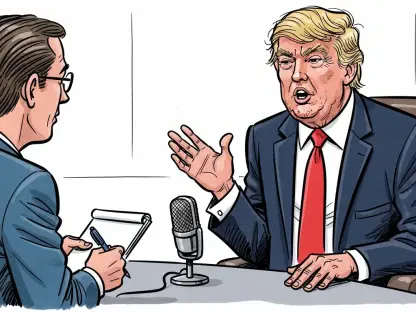The geopolitical landscape has shifted significantly, driven by escalating tensions involving major global players. Analyzing the strategic approaches taken by influential leaders, particularly the nuanced maneuvers employed by President Trump, reveals a roadmap intent on reshaping global power dynamics. The focus here is on the interplay between Iran’s pivotal role in the Middle East and Ukraine’s crucial position in countering Russian influence. Understanding these regions is essential to grasping the broader implications of contemporary international relations.
Unpacking the Key Geopolitical Dynamics
The enduring conflict between the United States and Iran is deeply rooted in historical grievances, many of which have shaped the present diplomatic climate. Iran’s adversarial stance has posed significant challenges for global security and economic interests, prompting bold strategies from various administrations. Meanwhile, Ukraine’s geo-strategic importance as a buffer against Russian expansions gives it critical relevance in Western diplomatic strategies. It functions as a litmus test for Russia’s broader aspirations and the efficacy of Western resolve in curbing such ambitions.
Strategic Evaluations: Iran and Ukraine in Focus
Iran’s Nuclear Calculus: A Turning Point
President Trump’s administration adopted a revitalized approach regarding Iran, seeking an unequivocal cessation of its nuclear ambitions. This assertive posture not only aimed at mitigating nuclear proliferation but also recalibrated the balance of power in the Middle Eastern theater. The significance of neutralizing Iran’s nuclear potential extends beyond the region, potentially altering alliances and economic corridors linked to the oil-rich Gulf territories. The implications of possible military engagements underscore a strategic evolution from containment to potential confrontation.
Navigating Russian Aggression in Ukraine
In parallel, Ukraine functions as a critical battleground in the West’s efforts to counter Russian assertiveness. The Trump administration’s policies toward Russia reflected an acknowledgment of Moscow’s aggressive paradigm, which has implications extending beyond Europe. Successful resistance against Russian encroachments in Ukraine could invigorate Western alliances and reinforce NATO’s deterrent posture. Enhanced military collaboration and sustained diplomatic pressure were pivotal strategies in this geopolitical chess game, underpinning a comprehensive approach against Russia’s regional ambitions.
Broader Geopolitical Interconnectedness
Iran and Ukraine are part of a grander strategic matrix, intertwined with varied global interests. The complexities of Chinese involvement, alongside European apprehensions, add layers to the U.S. conundrum in formulating a coherent foreign policy. While ambitions in the Asia-Pacific region continue to demand attention, maintaining a delicate balance between engaging in European and Middle Eastern issues remains critical. This interconnectedness underscores the importance of a multifaceted approach in navigating multifarious geopolitical currents.
Projecting Future Trends and Implications
As emerging technologies and shifting economic paradigms redefine global strategy, states are tasked with adapting to fluid international terrains. Digital intelligence and cyber capabilities increasingly forge the frontier of modern diplomacy. These advancements offer not only challenges but avenues for innovative engagement. The strategic foresight of combining traditionally diplomatic efforts with cutting-edge technological solutions remains central to maintaining strategic superiority in this evolving geopolitical era.
Strategic Pathways Forward
Given the multifaceted challenges posed by evolving geopolitical landscapes, it becomes crucial for stakeholders to prioritize flexible strategies and robust risk assessments. Emphasizing diversifying economic engagement and adopting adaptive planning processes can realign efforts with the prevailing global trends. For enterprises navigating these uncertain waters, astute alignment with politico-economic currents will be advantageous, enabling them to anticipate potential adversities and capitalize on emerging opportunities.
In conclusion, the intricate interplay of global powers surrounding Iran and Ukraine highlights the importance of resilient strategic vision and decisive action. These regions hold profound implications for global power structures and international stability. Successfully navigating these developments requires keen awareness of military, diplomatic, and technological paradigms and proactive engagement in evolving geopolitical dynamics.









